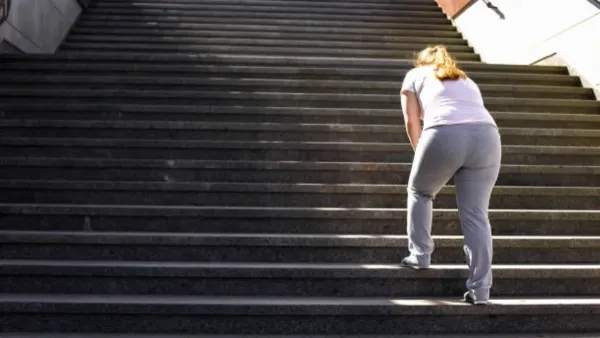

They may look like the lap of luxury but, behind the glamour and the grandeur of Britain's stately homes and castles, the reality is often leaky roofs, freezing rooms and eye-watering bills. And given how much it costs to run a historic house, no wonder aristocrats are turning to increasingly creative ways to keep the coffers filled.
That's certainly the case for the hard-pressed owner of one of England's finest country homes, who recently sold his woolly mammoth skeleton to keep the wolf from the door. It went for £250,000, alongside various other pieces of taxidermy, including a lion wearing a crown, a zebra with birds walking across its back like The Beatles at Abbey Road, dinosaur bones and various other strange items and artworks.
Auctioneers Dreweatts hosted Parnham Park: A Modern Grand Tour on the Jurassic Coast, and confirmed the sale raised £2.2million for the home's owner, James Perkins. Parnham Park is a magnificent 16th-century Grade-I stately home set in 139 acres of Dorset parkland that has long captivated heritage enthusiasts.
Dating back to the 15th century, it underwent significant renovations in the early 1800s under the direction of the celebrated architect, John Nash, responsible for Buckingham Palace, Regent Street and Brighton's Royal Pavilion. But in 2017 a catastrophic fire devastated the property.


Music industry veteran and rave promoter Perkins, 57, bought the burnt-out shell for £2.5million in 2020 after previously turning 17th-century Aynhoe Park in Northamptonshire into a party and events venue. Now, he hopes to create something similar with Parnham Park - and is unsentimental about selling off some of the property's treasures to fund his grand scheme.
"If you don't feel a little bit of pain, then you can't expect anyone to do the same. You can't give people your secondary bits, you've got to sell them your treasures," he explains.
"This sale marks an important milestone in Parnham's evolution ahead of some major structural repair, as the proceeds will help us restore the estate to its former glory and establish a unique destination for lovers of art, design, and grand entertainment."
But for other owners of Britain's stately homes and castles, their mission is more personal than business - they are protecting ancestral seats for future generations.
Ewan Frost-Pennington is the 34-year-old current custodian of Muncaster Castle in Cumbria.
The former energy consultant was working in the green tech field in sunny California but returned home in 2022 to look after the family estate. The Grade-I listed building recorded on the National Heritage List has been in his family for more than 800 years.
Primarily built in the 13th century, with additions and renovations occurring throughout the following centuries, including the Great Hall and a pele tower. Major remodelling and enlargement took place in the 1860s by architect Anthony Salvin.
But Muncaster was haemorrhaging £50,000 a year and the roof was falling in when Ewan came back to take over the reins from his parents Peter, a vet, and Iona, who inherited the castle down the maternal line, and who still live there.
Eldest son Ewan lives in a more modest cottage nearby Ravenglass. "As a single man you don't want to be taking women back to the castle. It's intimidating," he admits.

The family have had to be hugely creative about bringing in new revenue streams to keep the castle going. Ewan explains: "Just to keep up with ongoing repairs we need to be bringing in around £1.5million and that isn't even to tackle major renovations like a new roof which will be needed in around 25 years. The money that comes in is not ours to spend. It belongs to Muncaster... we are its stewards.
"It is more than a family home. It is a part of the community and it is our duty to preserve it for future generations. I see myself more as a custodian. My brother and sister have careers and weren't interested in looking after it and it isn't possible to divide it up."
He breaks into a smile: "I am part of a new generation of stately home owners who have been brought up in a tourist attraction."
The family welcomes around 60,000 visitors every year to a busy calendar of events from Medieval Muncaster, which runs from May 24 to June 1 involving huge battle re-enactments and plenty of opportunities for people to get their hands on some old weapons!
Then there is a sausage festival, two music festivals, Country by the Castle in June and the indie-music Krankenhaus Festival in August and Race the Tide, a 10km obstacle course over the tidal River Esk that attracts runners from all over the world
But the family's biggest annual event, a Halloween extravaganza called Scarecaster with zombies and ghouls running through the maze and gardens was, in fact, started by his parents. Today, it attracts more than 10,000 guests and includes a family friendly event too.
"It is a high budget event and has grown every year unless the weather is bad," says Ewan. It costs around £100,000 to stage Scarecaster and its little sister equivalent each year but the family makes £200,000 in profit - provided the weather holds up.

Ewan says they love opening up the castle to the public and see it "more as a community asset than a private home".
"At the moment a third of the castle is effectively moth-balled, like the old servants quarters. I would love to open them up for the public to stay in but they are tiny rooms with no en-suites and no view," he says. "I am thinking of a visitor experience where people pay to experience life as a servant."
His idea sounds like the basis of a good reality TV show - a take on Channel Five's Rich House, Poor House, with a step back in time added to the class divide. But while Ewan has no intention of going down the reality TV route, Francis Fulford, Lord of the Manor of Great Fulford has no such qualms.
His forebears have lived at Great Fulford estate in Devon for over 800 years. Twenty years ago Fulford, and his fabulous house, became the unlikely stars of a reality TV show. A TV crew offered him "a large sum of money" to make a documentary-style reality TV show about his family.
"We came across as loud-mouthed, appallingly politically incorrect people with ghastly language," he says of the Channel Four show, The F***ing Fulfords. We would be filming all day and I would ask the producer if that was it and they would say that they had about 15 minutes worth of footage. Television is hard work."

The Fulford's home is a 16th-century manor house, with about 20,000 square feet of floor space and too many rooms to count, nestled in 3,000 acres of lush Devon countryside.
Francis says: "Our four children are grown up now so there is just me and my wife Kishanda rattling around. I was born in this house. I sleep in the room my father died in. I do love it but it isn't easy to keep it going. The insurance alone is £25,000. We need an income of £50,000 just to keep things ticking over but that doesn't cover any repairs."
The family lives frugally. "We never put the heating on unless the temperature drops below freezing so the pipes don't burst," he says.
And the couple employ no permanent staff because they "eat money."
"I don't mind sitting on my lawn mower - I find it quite therapeutic," he laughs.
The house isn't open to the public but they allow the odd coach party or film crew.
"There are two ways to run a country house: One is to work really hard. I've always had an aversion to that," says Francis. "The other is to run a low-key operation, with minimal expenses. With big houses, the key things are to keep the water out and make sure the electrics don't catch fire. Whether the wallpaper's peeling off isn't important."
After their foray into reality TV, the couple's latest venture is pottery weekends which are proving hugely popular. "Wellness is such a big thing now and my wife offers these three day pottery courses," continues Francis. "People love it and are totally absorbed by it. It's much more fun than yoga and you go home with something beautiful." The three day courses are held in the Fulford Studio, a converted barn, for £360 or two days for £240.
The 72-year-old landowner isn't the only aristocrat to have gone down the TV route. Highclere Castle, owned by occupants George Herbert, 8th Earl of Carnarvon and his wife Lady Fiona Carnarvon was used to film Downton Abbey. Visitors can go on Downton tours costing £140 for adults, and £85 for children. Private tours with champagne, a driver and access to other locations and coach parties from London bring in more revenue for the castle.
Over the past two centuries, thousands of country houses have been torn down. Ben Cowell is director general of the Historic Houses Association, which helps owners of 1,650 houses, castles and gardens throughout the UK to conserve them.
He recently revealed how owners used to make money from renting land to tenant farmers and invested it in industry, mining, or railways, which helped to replenish the family fortune and fund a country house way of life.
"There were almost 5,000 mansions at their mid 19th century peak, but that number has almost halved - only about 3,000 remain today," he said.
Some country houses were requisitioned by the military during the second world war, and frequently damaged. When the keys were handed back, the families often no longer had the financial means to repair them and some were just pulled down.
"Some houses were buried beneath new housing estates, motorways and golf courses as cities expanded and encroached on the surrounding countryside," said Cowell.
However the 1976 Finance Act allowed owners to seek exemption from inheritance tax in return for a commitment to keep their houses open to the public and in good order.
"Many hundreds of houses were saved as a consequence," added Cowell. "Most owners are ordinary people who have an extraordinary responsibility - which is to take care of a historic house." A mammoth responsibility for which we can all be truly grateful.
-
Coconut Ice Cream: Very Yummy seems to be coconut ice cream, this is the method of making at home …

-
Mom Refuses To Pay For Son’s Wedding Because His Fiancée Catfished Him

-
Love Horoscopes For Each Zodiac Sign On Sunday, May 25, 2025

-
When you climb stairs, do you feel out of breath? It could be a precursor to these health problems

-
Keep your kidneys healthy and stay hydrated: A doctor offers crucial summertime health advice
